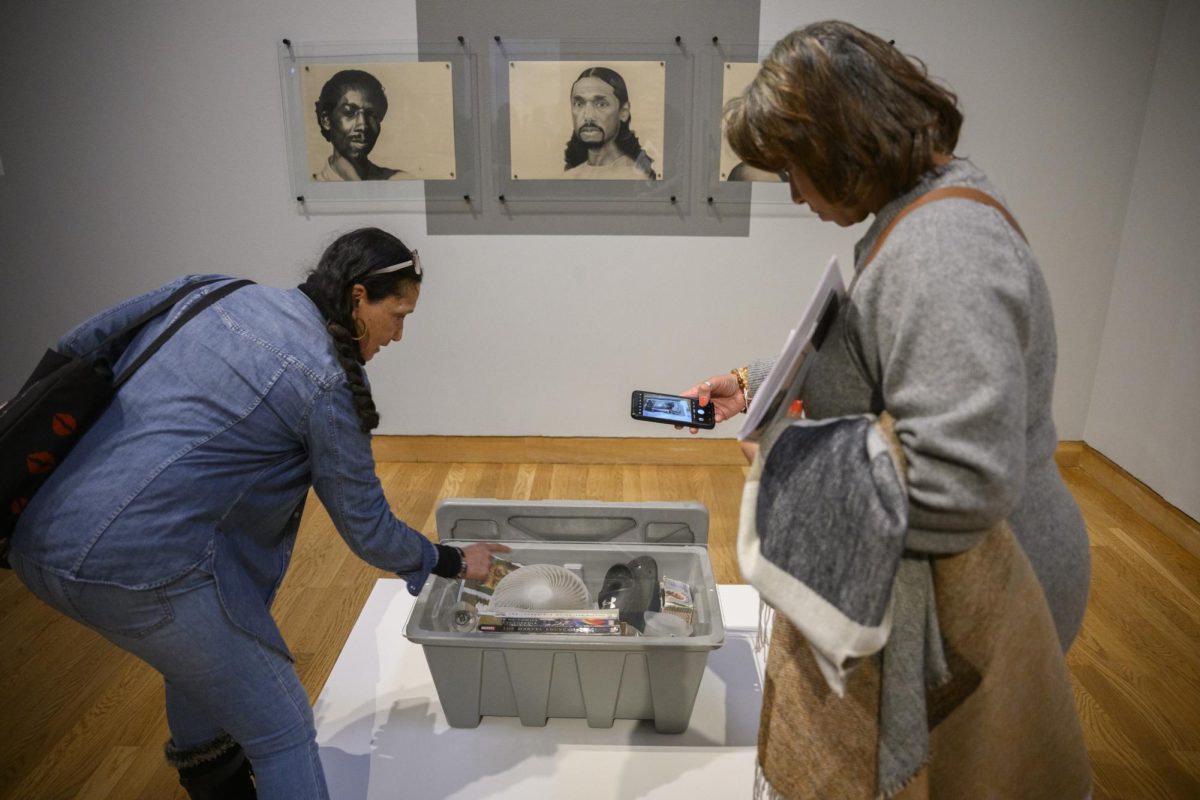He cradled a 500-year-old black and silver Japanese sword, sharp enough to shave with, and slowly placed it on the floor. He adjusted the pants of his uniform, or hakama, and kneeled before his instrument. Never taking his eyes from the weapon, he leaned forward, curled into a ball and bowed to it.
A mere four seconds later, the serene moment passed, and in a series of swift, succinct movements, Al Kilgore sliced the air with the priceless sword.
Kilgore, 38, has practiced the art of drawing his sword, called iai, since he was 8 years old.
And this week, he is helping organize an event that features the art. Iai is one of four components in the Sengoku Classic, the first Japanese sword tournament of its kind in Minnesota.
The organizers hope this event, paying homage to an art form that began in medieval Japan, will bring together its many styles and techniques.
University accounting student, Angelina Vu and computer engineering alumnus Dan Rogovin are owners of the North American Budo Kai, the company putting on the Sengoku Classic.
“There are a good number of tight-knit (martial arts) communities that have animosity towards each other and are not interacting,” Rogovin said. “We want to bring everyone together to have fun and show off.”
As of this week, seven competitors have registered for the event.
“It is our first year, we had pretty modest expectations and they’ve been filled,” Rogovin said. “After this year, things will pick up.”
The other three components of the Sengoku Classic are empty-handed karate kata, cutting and sparring.
Karate kata is the martial arts form the average person is familiar with, no weapons are used. Think “Karate Kid.”
Cutting is what it sounds like – using deadly swords, the kenshi, or sword-wielder, slices through standing targets. Judging is based on the cut and movement exhibited.
Sparring is fight-heavy. Two kenshis, using special wooden swords, called bokken, fight each other. Even though they are not using actual swords, there is potential for injury, but safety is a high priority, Kilgore said.
Like serpents, the swordsmen stare into each other’s eyes making quick steps forward and back, making it hard to decipher which direction they are going.
After an extended, but often varied period of threatening gazes, they fight, slapping their wooden swords together and grunting. If they do not succeed in “killing” their opponent they quickly distance themselves and go back to staring at each other. If one or both kenshis are killed, they go back to their respective corners and bow.
Along with the competition, there will be taiko drumming performed by Misora Taiko on a wine-barrel size drum the event organizers built as a gift in exchange for their musical talents. The rare Rawson sword collection will also be on display.
The swords themselves are fine works of art, hundreds of years old. Each component has an artistic and functional quality. The metal parts feature dragon carvings, stingray skin is used in the tsuka, or handle, and designs are created on the blades with clay.
Kilgore, spokesman for the event, showed off a handful of swords and spears that are usually displayed behind glass in national museums, even though they are still in full operating condition. These swords, the oldest from the 1200s, will be on display at the event.
Details aside, Vu explained a saying, of which she does not know the origin, central to Japanese sword arts and the event:
“A fool only trains to cut, and a wise man trains so he does not have to.”







